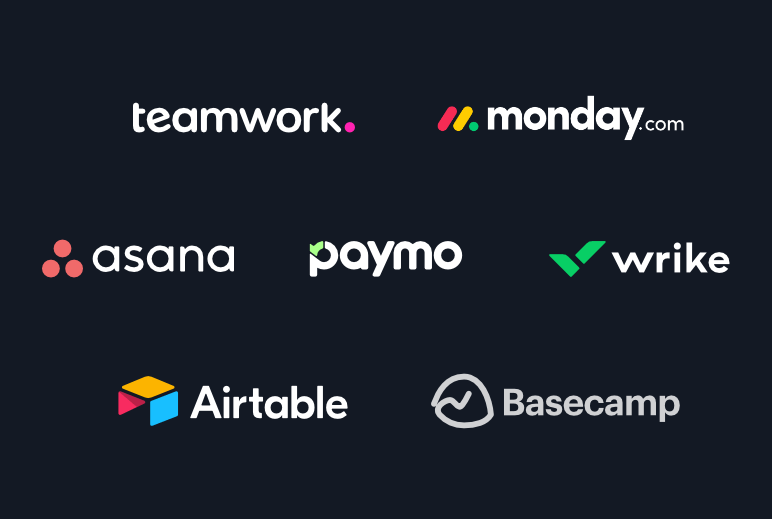A small oversight in a project can result in significant setbacks, leading to delays that frustrate clients and demoralize the team. Nobody wants to find themselves in such a situation, right?
It just goes to show how challenging project management can be. Besides, as surveys reveal, a whopping 91% of project management pros report facing challenges in their organizations.
And here’s a startling fact: poor project management can cost companies 10% of their budget on every dollar spent. That’s why proper project management and the right tools are crucial. In the past, that tool was the Gantt chart.
The good thing about it is that it tells you what stage your project is at, how much time you have, and what tasks are yet to be finished. The Gantt chart is easy to grasp and valuable.
Nowadays, with a plethora of project management tools and methodologies available and with the project management software market booming, you might wonder: Is the Gantt chart still relevant?

Let’s dive right into the facts.
What is a Gantt chart?
Invented in the early 20th century, the Gantt chart remains a useful tool for project managers and teams. It’s a visual way to organize tasks, deadlines, and project progress. You’ve probably seen those charts with bars and columns. They give a clear picture of what needs to be done and when.
Here’s how it works:
You list all the tasks on the left, and on the right, you have a timeline. Each task gets a bar that shows when it starts and ends. The longer the bar, the longer the task will take.
Originally, Gantt charts were just for planning projects, but now they do much more. You can see how things are going right now, give tasks to your team, watch over those tasks, and anticipate how much they’re going to cost.
And guess what? You can use Gantt charts with other tools like team collaboration software, kanban boards, and schedules for even better project management.

Is the project Gantt chart still relevant in 2024?
At first glance, the above question may seem unnecessary. Isn’t it obvious? However, we’ve decided to address it anyway. To get started, we had to do some homework.
Here’s what we found:
- Clear planning and timeliness: The Gantt chart excels at visualizing project timelines and providing visibility into tasks and progress. It’s easy to share with stakeholders, which simplifies reporting.
- Effective team and task management: With a Gantt chart, you can easily track who’s working on what and monitor progress, preventing downtime and overworked team members.
- Team alignment: Using the same project management tool keeps everyone on the same page, which, in turn, fosters collaboration and speeds problem resolution.
- Transparent task relationships: The diagram shows task dependencies, helping to identify conflicts or bottlenecks early on. This visibility helps resolve issues before they escalate.
- Detail management: Every detail is accounted for and visualized, streamlining the process and preventing oversights.
With all this in mind, the Gantt chart seems relevant. As remote work becomes more common in 2024 (98% of those surveyed would like to keep working remotely), it’s likely that the Gantt chart is here to stay. Remote teams depend on tools for visible project management and seamless collaboration, making the Gantt chart an essential choice. Let’s take a closer look at why it’s up to the challenge.
The importance of Gantt charts
To measure the relevance of the Gantt chart today, we need to align its capabilities with today’s management and customer expectations. What matters most now are the results: reports, project status, risks, resources, and forecasts, among other things – exactly what the Gantt chart delivers.
Here’s why the Gantt chart remains invaluable:
- Effective communication: It’s the best way to communicate project plans to team members and stakeholders, especially in industries like manufacturing and construction, where task dependencies are critical.
- Suitability for traditional projects: It thrives in plan-based project environments and repetitive processes with well-defined activities, simplifying even complex projects.
- Comprehensive details: From task descriptions to schedules, responsible team members, task dependencies, and completion percentages, it covers all essential project aspects.
- Accessibility: Once reserved for specialized fields, advancements in software make Gantt charts user-friendly for everyone, improving planning, collaboration, and delegation efforts.
- Rockstar status: Loved for its transparency, simplicity, flexibility, and compatibility with other tools, it remains a go-to for planning, tracking, and managing projects.
Using a Gantt chart streamlines planning, enhances collaboration, optimizes resource allocation, and facilitates task management, especially when managing multiple projects simultaneously.
Did you know that 60% of project managers juggle between 2 and 5 projects at once? Coordinating multiple projects and teams can decrease work efficiency. Meanwhile, the research shows poor cross-team collaboration is the top challenge to successful project management.

That’s where a Gantt chart can make a difference.
Gantt chart use cases
Who benefits from using a Gantt chart? Pretty much everyone. Whether you’re a project manager in IT, a small business owner, or a big corporation in construction or oil production, the Gantt chart is your friend.
Here’s who it’s beneficial for:
- Product development: Ideal for planning product launches from initial idea to launch, ensuring all features are accounted for.
- Agriculture: Great for organizing planting schedules and ensuring specialists plant at the right time.
- Advertising campaigns: Essential for coordinating the various activities in a promotional campaign to ensure consistency.
- Customer outreach: Crucial for managing multiple customer interactions, ensuring each query, requirement, and deal is handled promptly.
Industries and operations that benefit include:
- Project management;
- Logistics and fleet management;
- Personnel task planning and training;
- Construction and event organization;
- Website development and product launches.
Professionals who may find it valuable include:
- Project managers and team leaders;
- Executives and production managers;
- Software developers and architects;
- Resellers with customers in the manufacturing, construction, or service industries.
So, did you find yourself among those listed and those who would benefit from a Gantt chart?
What makes the Gantt chart so popular?
It’s all about its effectiveness, thanks to features like:
- Task list: Lists everything you need to do for your project.
- Timeline: Shows when each task starts and ends, like a calendar.
- Taskbars: Colorful blocks represent tasks and their duration.
- Dependencies: Shows which tasks depend on others, like a chain reaction.
- Progress: Marks tasks as done to track completion.
- Resources: Helps manage who is doing what and when.
- Critical path: Highlights key tasks for on-time project completion.
What’s more, compared to other tools such as spreadsheets or Kanban boards, the Gantt chart stands out for its ability to manage task dependencies, workloads, and schedules.
Still trying to decide whether to add the Gantt chart to your toolbox? Consider whether your current tools can answer key questions such as workload, schedule, and task impact. Meanwhile, the Gantt chart answers those questions.
But here’s the best part: You can keep your current tools. Just try using the Gantt chart with them to see how it can help.
Plus, you need to know: Although some may call it outdated, many people still use the Gantt chart because it:
- Shows task sequences for managers.
- Visualizes project scope and team involvement.
- Enables data-driven decisions.
- Simplifies scheduling and time tracking.
- Highlights completed tasks and issues.
- Facilitates team collaboration and accountability
- Provides updates and progress reports
- Visualizes complex data and task relationships.
- Saves time and efficiently manages resources.
Is the Gantt chart versatile and comprehensive? Absolutely.
However, one aspect of this tool may not be as lovely, but it is essential to be aware of.
Drawbacks to the Gantt chart
A significant drawback is the complexity of creating and customizing it, especially when consolidating various spreadsheets and data. This process requires patience and time, which may not always justify its value, as plans are often outdated once completed.
In addition, as projects grow, the Gantt chart can become unwieldy and cluttered with documents and comments that obscure rather than enhance clarity.
It may also not fit well in agile environments, where project flow is emphasized over structure and project structures evolve dynamically.
Finally, while the Gantt chart is applicable early in the project, it may lack the sophistication needed for later project phases.
Is there a solution to these challenges?
Yes, there is. Using out-of-the-box Gantt chart software can be a fast track to results. Going this way is especially advantageous as you get a wide range of templates tailored to different needs, making your work much more accessible and speeding up the results significantly.
Whether you’re planning media releases, website redesigns, or construction projects, there’s a Gantt chart solution for you.
When should you use a project Gantt chart?
If any of these apply to your situation, a Gantt chart is recommended:
- You have a large number of interrelated tasks.
- Tasks must be completed in a specific order.
- The project has strict deadlines.
- Multiple teams are involved, and coordination is essential.
- You need to manage the workload of each team member.
- Stakeholders need visibility into progress and access to interim results.
Last but not least. When selecting software with a Gantt chart, write a software requirements specification to outline what features this software should have, then select the most appropriate one with a Gantt chart module.
Also, ensure the software integrates easily with other planning or project management tools and check for data security measures and scalability.
Next Steps
Let’s say you’re looking for software to make your project management more transparent and organized. Consider Paymo or inquire about the principles of Gantt charts and how this tool can benefit you. We are here to support you in this journey.

Maya Kirianova
Author
Maya Kirianova is a freelance writer with a passion for crafting engaging content that spans various niches that range from technology to business. With a strong foundation in these industries, she delivers insightful and well-researched content that helps businesses and individuals navigate the complexities of the financial world.

Alexandra Martin
Editor
Drawing from a background in cognitive linguistics and armed with 10+ years of content writing experience, Alexandra Martin combines her expertise with a newfound interest in productivity and project management. In her spare time, she dabbles in all things creative.


